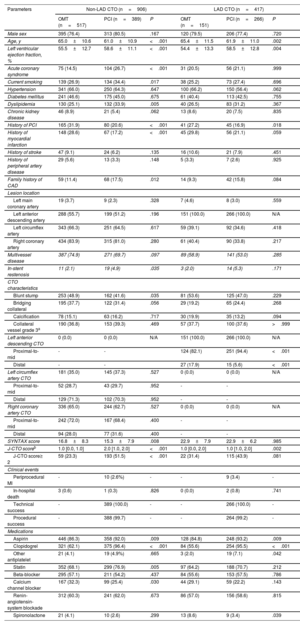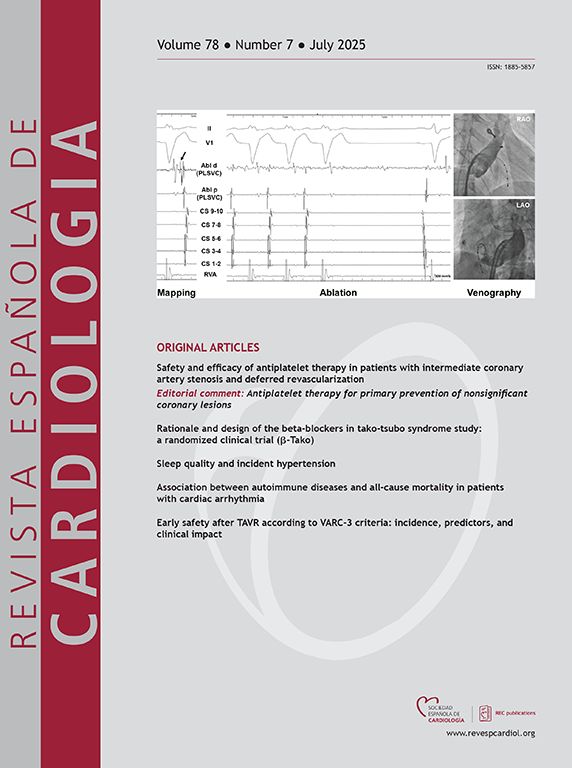
The clinical benefits of percutaneous coronary intervention (PCI) for chronic total occlusion (CTO) remain controversial. This study aimed to investigate whether PCI for CTO located in the left anterior descending artery (LAD) could have beneficial effects on clinical outcomes.
MethodsPatients were retrospectively selected from a single-center CTO registry and followed up for approximately 10 years. The patients were grouped based on the presence of LAD CTO and whether the CTO was revascularized. Inverse probability weighting adjustment was also performed. The primary outcome was the composite of cardiac death or myocardial infarction at 10 years.
ResultsAmong 1323 patients with CTO, 1034 were male, and 417 had LAD CTO. PCI was attempted in 72.2% of participants in the LAD CTO group and in 49.9% of those in the non-LAD CTO group. In the non-LAD CTO group, PCI did not significantly affect the primary outcome (medical therapy vs PCI, 20.7% vs 13.4%, adjusted HR: 0.72, 95%CI, 0.47–1.10; P=.13). However, a significant difference in the incidence of the primary outcome between the treatment methods was observed in the LAD CTO group (30.8% vs 15.4%; adjusted HR: 0.44; 95%CI, 0.25-0.81; P=.007). A significant interaction was observed between LAD CTO and treatment method (P for interaction=.011).
ConclusionsThe benefits of PCI compared with medical therapy for CTO might be more apparent when the CTO is located in the LAD.
Keywords
Identify yourself
Not yet a subscriber to the journal?
Purchase access to the article
By purchasing the article, the PDF of the same can be downloaded
Price: 19,34 €
Phone for incidents
Monday to Friday from 9am to 6pm (GMT+1) except for the months of July and August, which will be from 9am to 3pm






